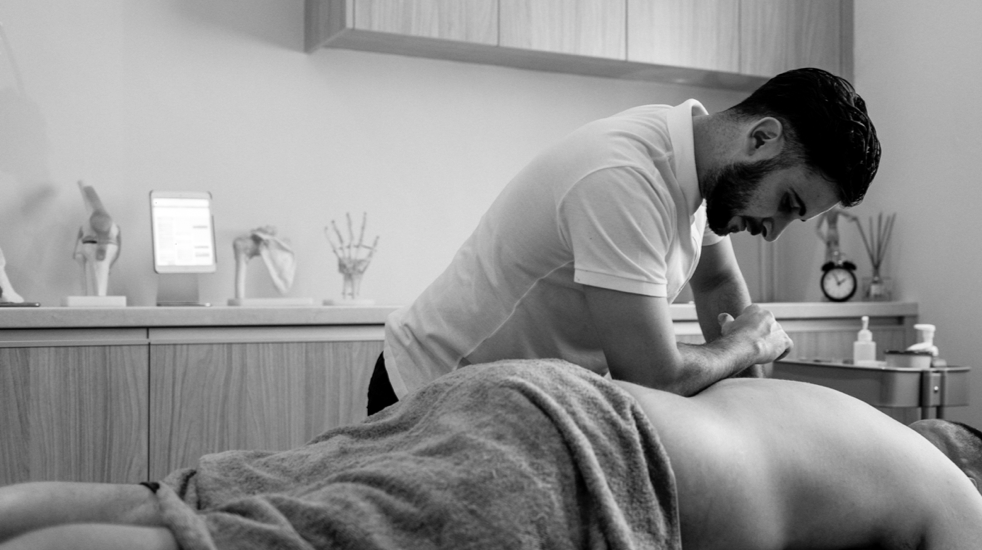How Massage Therapy Can Help Ease Sciatica Pain


Sciatica is more than just a buzzword in the world of back pain—it’s a condition that affects millions of people worldwide and can lead to significant sciatica pain relief challenges. If you’ve ever experienced a sharp, shooting pain that radiates from your lower back down your leg, you may be familiar with the discomfort it brings. This condition isn’t just a nuisance; it can significantly impact your quality of life, making simple tasks like walking, sitting, or even standing feel unbearable.
How Sciatica Impacts Daily Life
Living with sciatica can be challenging, both physically and emotionally. The pain can vary in intensity, from a mild ache that lingers in the background to a debilitating sensation that stops you in your tracks. It’s not uncommon for sciatica to limit your ability to work, exercise, or enjoy time with family and friends. Tasks that once felt easy—like bending to tie your shoes, playing with your kids, or going for a walk—can suddenly become a source of dread. Sciatica often disrupts sleep, affects concentration, and can lead to a cycle of pain and stress that impacts overall well-being, including self-care routines and mental health.
Massage Therapy: A Natural, Non-Invasive Treatment Option
For those seeking relief from sciatica, remedial massage therapy offers a promising, drug-free alternative. Unlike medications that simply mask the pain or invasive procedures that carry risks, massage therapy aims to address the root causes—whether it’s muscle tension, muscle relaxation nerve compression, or inflammation. By incorporating massage therapy into your care plan, you may find a gentler, more holistic path to healing. Massage not only treats the symptoms but also helps restore balance and function to the body as a whole.
What is Sciatica?
Sciatica is not a medical condition in itself but a term that describes a set of symptoms caused by irritation or compression of the spinal nerves and nerve roots, including the sciatic nerve. The sciatic nerve is the largest and longest nerve in the body, running from the lower spine, through the hips and buttocks, and down each leg. It’s essential for leg movement and sensation, which is why sciatica can cause such widespread discomfort.


Common Causes of Sciatica
Sciatica can develop for several reasons. Herniated or bulging discs are among the most common causes, as they can press on the nerve roots in the lower back. Other contributors include spinal stenosis (narrowing of the spinal canal), piriformis syndrome (where a small muscle in the buttock irritates the nerve), degenerative disc disease, or even pregnancy. Lifestyle factors like prolonged sitting, poor posture, and lack of exercise can also increase the risk of developing sciatica.
Recognising Sciatica Symptoms
Typical sciatica symptoms include sharp or burning pain that travels from the lower back down the leg, numbness or tingling in the affected leg, and muscle weakness—often associated with tense muscles that create additional pressure. The pain often worsens with prolonged sitting, coughing, or sneezing, and some people experience a constant ache, while others feel intermittent, shooting pain that comes and goes.
How Sciatica Differs from General Lower Back Pain
Unlike general lower back pain, which tends to stay localised in the back, sciatica usually involves nerve-related symptoms that radiate down the leg. This distinct pain pattern is a key factor in diagnosing sciatica, and it often feels different from muscular back pain. Sciatica may also cause a pins-and-needles sensation or a feeling of heaviness in the leg, which sets it apart from other types of nerve pain and back discomfort.
How Massage Therapy Helps Relieve Sciatica Pain
The Mechanisms Behind Massage for Sciatica
Massage therapy works by addressing the underlying issues that contribute to sciatica. It focuses on releasing muscle tension, improving circulation, reducing inflammation, and alleviating nerve compression. This multi-faceted approach creates an environment where the body can begin to heal naturally, without the need for invasive interventions.
Releasing Muscle Tension
Sciatica often involves tight muscles in the lower back, hips, and glutes that can press on the sciatic nerve. Massage techniques such as deep tissue work target these muscles, helping them relax and relieving pressure on the nerve. By loosening the piriformis muscle, for example, a therapist can reduce irritation of the sciatic nerve as it passes underneath or through the muscle.
Improving Circulation and Reducing Inflammation
Massage therapy stimulates blood flow to the affected areas, delivering oxygen and nutrients essential for tissue repair. This enhanced circulation also helps flush out toxins and reduce inflammation, which is often a key contributor to sciatic pain. As inflammation decreases, pain levels tend to diminish, and mobility improves.
Promoting Nerve Health
By reducing muscular compression and encouraging relaxation, massage can create more space around the sciatic nerve, helping to reduce pressure, assisting disc herniation and relieve the pain that triggers pain. This process supports the health of the nerve tissue itself, potentially reducing long-term irritation.
Types of Massage Effective for Sciatica
Not all massage techniques are created equal when it comes to sciatica relief.


Some of the most effective approaches include massage for sciatica :
- Deep Tissue Massage: This technique targets deeper layers of muscle and fascia, helping to release chronic tension and break up adhesions that may contribute to nerve compression.
- Myofascial Release: Focuses on the fascia—the connective tissue surrounding muscles—improving flexibility and reducing tightness that can trap nerves.
- Trigger Point Therapy: Involves applying pressure to specific points that refer pain elsewhere in the body, helping to “switch off” overactive muscle fibres and reduce referred pain.
- Swedish Massage: A gentler approach that promotes relaxation, improves circulation, and helps reduce general muscle tension.
Scientific Support for Massage Therapy
Research studies and clinical observations have shown that alternative therapies, including massage therapy, can be effective in reducing pain and improving function in people with sciatica treatment. For example, a study published in the Journal of Alternative and Complementary Medicine found that massage therapy significantly reduced pain intensity and improved quality of life for participants with chronic lower back and true sciatica pain. Many therapists also share case studies where clients have experienced significant relief and improved mobility after consistent massage sessions.
Benefits of Massage Therapy for Sciatica Sufferers
Pain Reduction
The primary benefit of massage therapy for sciatica is pain relief. By targeting muscle tension and nerve compression, massage helps to ease the intensity and frequency of sciatica pain, allowing clients to reclaim their daily lives.
Improved Mobility
Sciatica can make it difficult to bend, twist, or even walk comfortably. Massage therapy helps restore range of motion by improving flexibility, releasing tight muscles, and complementing physical therapy for better posture.
Stress Relief and Better Sleep
Chronic pain often leads to stress, anxiety, and poor sleep. Massage not only addresses the physical discomfort but also calms the nervous system, other nerves, reducing cortisol levels and promoting relaxation while alleviating other symptoms . Many clients report better sleep quality after a massage, which is crucial for the body’s healing process.
Complementary Care with Physio and Chiropractic
Massage therapy works beautifully alongside physiotherapy and chiropractic care. While physiotherapy focuses on strengthening and mobility exercises, and chiropractic care targets spinal alignment, massage complements these by addressing soft tissue imbalances—creating a comprehensive, integrative approach to healing through myofascial release.
What to Expect During a Massage Session for Sciatica
A professional massage therapist will begin by assessing your specific symptoms, medical history, and lifestyle factors. They’ll ask questions about the location and nature of your pain, what aggravates or relieves it, and how long you’ve been experiencing symptoms. This thorough assessment helps guide a personalised treatment plan.
Techniques Your Therapist May Use
Your therapist may use a combination of deep pressure, more pressure, gentle stretching, trigger point release, and long, flowing strokes to address tight areas. They may also recommend self-care techniques like specific stretches or posture adjustments to help maintain results between sessions.
Before and After Your Session
Before your session, it’s helpful to stay hydrated, wear comfortable clothing, and communicate openly with your therapist about your symptoms. After your massage, you may feel a sense of relief and relieve pain relaxation. Light soreness is normal as the body adjusts, but your therapist may suggest gentle stretching, more pressure, rest, or applying heat to support recovery.
When to See a Professional for Sciatica


Warning Signs to Seek Help
If your sciatic pain is severe, persistent, or accompanied by symptoms like numbness, muscle weakness, or bowel or bladder dysfunction, it’s important to seek medical attention.
These could indicate a more serious issue requiring urgent care.
The Importance of a Qualified Therapist
Not every massage therapist is trained to treat sciatica effectively. Look for a qualified, experienced therapist who understands nerve-related pain and has expertise in techniques like deep tissue, myofascial release, and trigger point therapy.
A skilled therapist will tailor their approach to your specific needs, ensuring a safe and effective session.
Getting Referrals and Recommendations
Ask your GP, physiotherapist, or chiropractor for trusted referrals. You can also check online reviews, testimonials, or ask potential therapists about their experience treating sciatica.
Don’t be shy—an informed choice can make a big difference in your recovery journey.
Recap: Why Choose Massage Therapy for Sciatica?
Massage therapy offers a safe, natural, and effective way to manage sciatica. By easing muscle tension, improving circulation, and supporting the body’s healing process, massage can help reduce pain, restore mobility, and enhance overall well-being.
It’s a versatile, non-invasive option that fits beautifully into a holistic care plan.
Tips for Finding a Professional Massage Therapist for Sciatica
Navigating the Options
With so many therapists out there, it can feel overwhelming to choose the right one.
Not every therapist has the experience or qualifications to address sciatica effectively, so it’s important to do your research.
Ask for Recommendations
Word-of-mouth is a powerful tool. Ask friends, family, or colleagues who have experienced relief from sciatica which therapists they trust.
Personal referrals often lead to therapists who have a proven track record in treating nerve-related pain.
Know Your Preferences
Consider what type of massage you feel most comfortable with—whether it’s firm pressure, a gentler approach, or specific techniques like trigger point therapy.
Understanding your preferences helps narrow down your options.
Inquire About Specific Techniques
Don’t hesitate to ask a potential therapist if they have experience treating sciatica. Can they explain how they’d approach your condition?
Do they use deep tissue, myofascial, or trigger point methods? The more informed you are, the better your choice will be.
Look for Case Studies or Success Stories
A confident therapist should be able to share examples of how they’ve helped clients with sciatica. While results vary, hearing about real-world success stories can give you peace of mind.
Ready to Try Massage Therapy?
If you’re struggling with sciatica, consider adding massage therapy to your care plan. At Incline Health in Leichhardt, our experienced team is ready to help you find relief.
Visit www.inclinehealth.com.au to learn more or book a consultation. We’re here to support you on your journey to better health.




